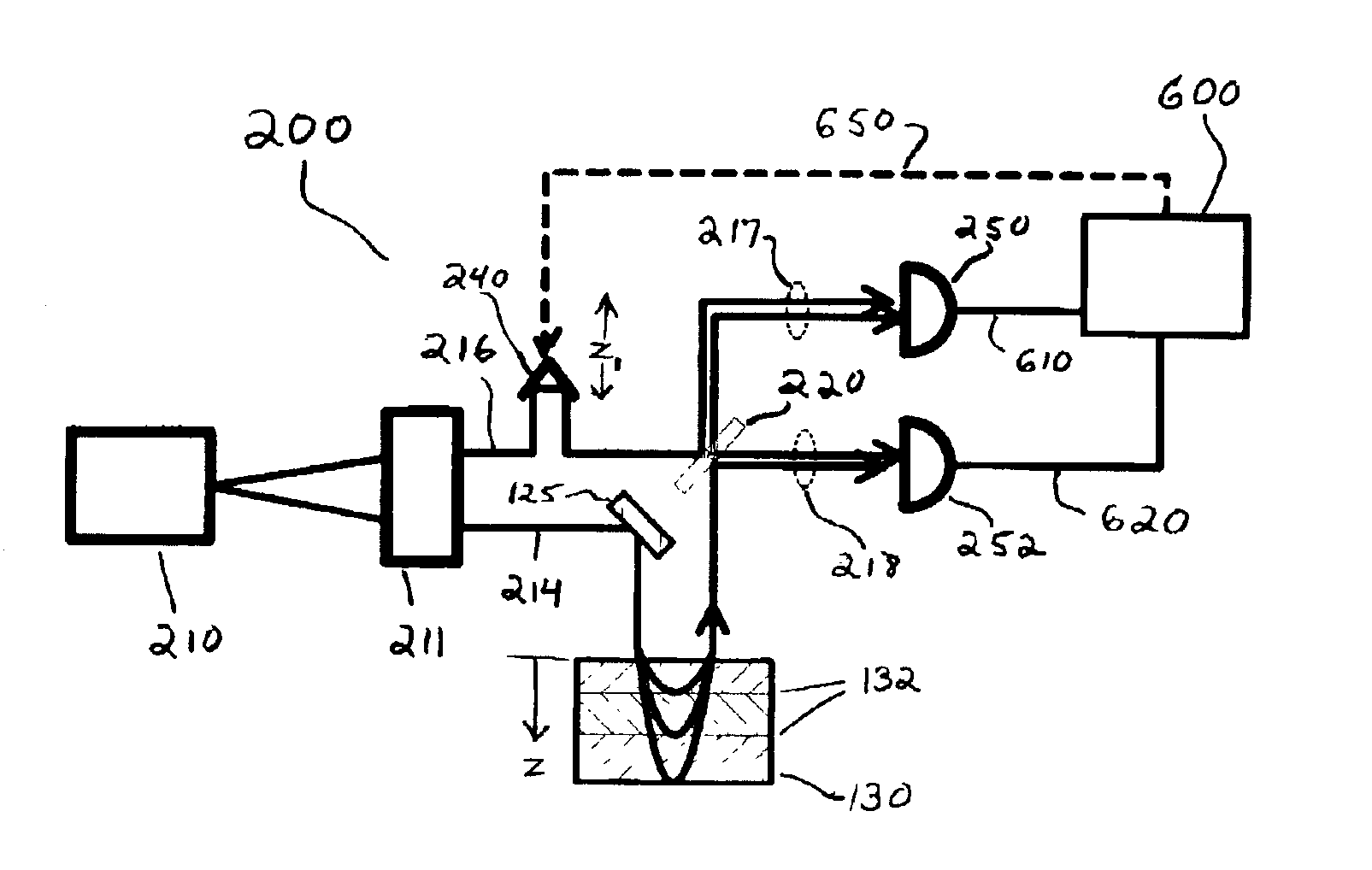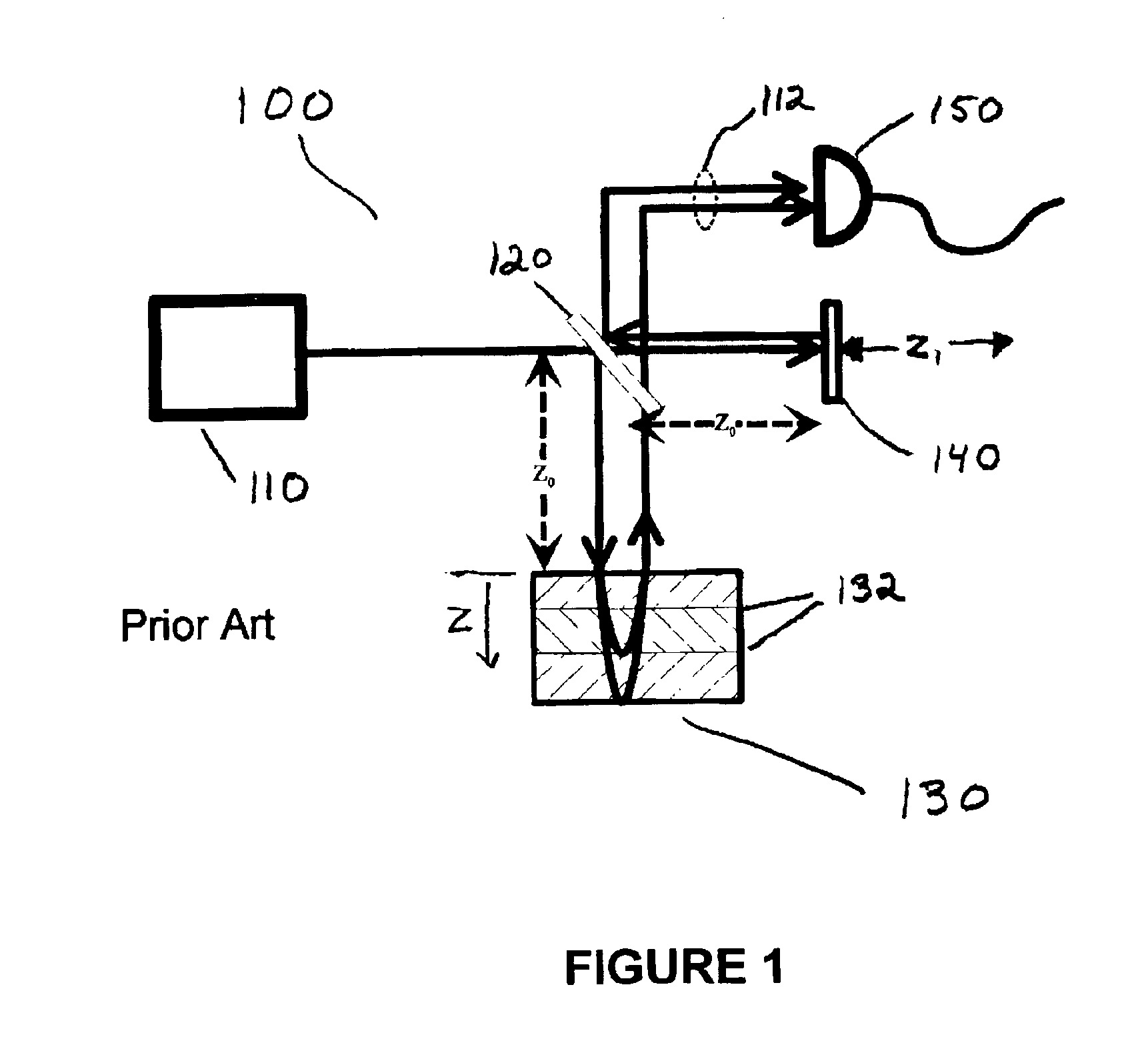Quantum optical coherence tomography data collection apparatus and method for processing therefor
a tomography and optical coherence technology, applied in the field of three-dimensional imaging techniques, can solve the problems of reducing the depth resolution capability of oct, the subject of oct, and the inherently low contrast of the signal of interest, so as to eliminate or reinforce the effect of coincident detection
- Summary
- Abstract
- Description
- Claims
- Application Information
AI Technical Summary
Benefits of technology
Problems solved by technology
Method used
Image
Examples
Embodiment Construction
[0024]Optical coherence tomography (OCT) is a technique for probing the depth (“z”) reflectance profile of semi-reflective objects, for example biologic tissue, in the same sense that SONAR can probe the thermal layers of the ocean using sound reflectance. SONAR is a first order effect, meaning it measures the strength of the returning signal as a function of time, so it requires transmission of a short temporal ping to achieve depth resolution. Because light travels so much faster than sound a first order light measurement is impractical in thin samples; therefore, OCT uses a second order effect, meaning it measures the interference strength between the probe and a scanned reference signal. OCT achieves depth resolution by using short coherence length radiation. The present invention, Quantum OCT (QOCT), is a fourth order effect, meaning it measures the quantum optical interference statistically observed in a beam of so-called entangled photons. The operation of the QOCT imager is ...
PUM
 Login to View More
Login to View More Abstract
Description
Claims
Application Information
 Login to View More
Login to View More - R&D
- Intellectual Property
- Life Sciences
- Materials
- Tech Scout
- Unparalleled Data Quality
- Higher Quality Content
- 60% Fewer Hallucinations
Browse by: Latest US Patents, China's latest patents, Technical Efficacy Thesaurus, Application Domain, Technology Topic, Popular Technical Reports.
© 2025 PatSnap. All rights reserved.Legal|Privacy policy|Modern Slavery Act Transparency Statement|Sitemap|About US| Contact US: help@patsnap.com



